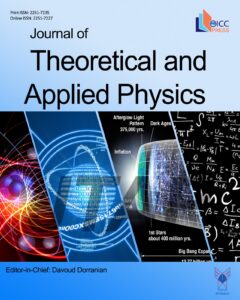Improving the terahertz collection efficiency based on impedance matching in spintronic THz emitters
Authors
- Seyedeh Maryam Hosseini 1
- Amin Sadraei Javaheri 1
- Fazel Jahangiri 1
- Seyedeh Mehri Hamidi * 1
- Hamid Latifi 1
Abstract
We study the improvement of terahertz collection efficiency in a THz-TDS system based on a spintronic THz emitter, by exploring the effect of substrate impedance matching. This improvement is obtained by properly coupling a hyper-hemispherical lens fabricated from suitable THz materials to a non-magnetic (NM)|ferromagnetic (FM)|substrate emitter structure. The emitter is a Ni|Pt bilayer film coated on a MgO substrate. The refractive index and the dispersion properties of the substrate are adjusted according to the impedance matching conditions and consequently for the maximum THz collection efficiency by a photoconductive antenna (PCA). By comparing various substrates, including MgO, Al2O3, SiO2, and polyethylene terephthalate (PET), our results reveal that the power of the THz radiation collected from the Ni|Pt|MgO with the hyper-hemispherical Si-lens coupler is 64.5 times larger than that from the Ni|Pt|MgO without the lens coupler. A PET substrate in direct contact with a hyper-hemispherical Teflon-lens could be a favorable choice for improved collection efficiency of STE-induced THz radiation, in the absence of Si-lens. These results could be considered useful to achieve the guidelines for scaling the THz radiation power emitted from the spintronic THz emitter according to the employed substrate and hyper-hemispherical lens.



